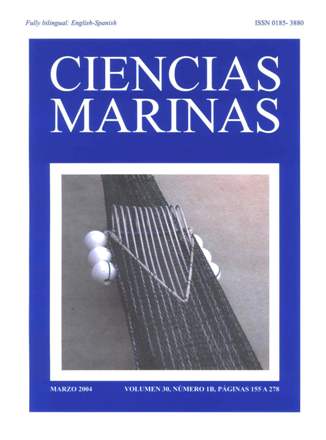Incidental catch of billfish and other species by Venezuelan longline vessels in the Caribbean Sea and western Atlantic Ocean: Period 1986-2000
Main Article Content
Abstract
An analysis is made of the catch, effort and catch per unit effort (CPUE) of the incidental capture of billfish and other species by longline vessels in eastern Venezuela. The information was based on fishing logbooks from 1986 to 2000. The fishing grounds were divided into two sectors according to the different hydrological regimes: the Caribbean Sea (11º–17ºN, 61º–75W) and the western Atlantic Ocean (5º–17ºN, 50º–60ºW). The number of vessels in the fleet increased from 9 to 41 units between 1986 and 1996. Tunas were the dominant group in the landings, representing on average 73.2% in the Caribbean Sea and 78.8% in the Atlantic Ocean. Yellowfin tuna (Thunnus albacares) was the most important species, accounting for 67.4% and 56% of the total weight captured in the Caribbean Sea and Atlantic Ocean, respectively. The incidental catch was composed of white marlin (Tetrapturus albidus), sail fish (Istiophorus albicans), blue marlin (Makaira nigricans), sword fish (Xiphias gladius), dolphinfish (Coryphaena hippurus), and sharks (mainly Carcharhinus spp. and Isurus spp.). White marlin and blue marlin presented asimilar pattern of variation and a sustained decrease in average yearly CPUE during the study period. For both species, CPUE seasonality was strong and more evident in the Caribbean, with a minimum in June and August. Blue marlin showed the highest yields per unit of effort (1.7 kg/100 hooks/day) in both sectors; dolphinfish showed similar CPUE values in both sectors, while the yields of sword fish were higher in the Caribbean Sea and those of sharks were higher in the Atlantic Ocean. The average annual CPUE of white marlin and several shark species showed significant differences between the Caribbean Sea and Atlantic Ocean sectors. The changes in abundance of the species seem to be associated with feeding migratory movements.
Downloads
Article Details
This is an open access article distributed under a Creative Commons Attribution 4.0 License, which allows you to share and adapt the work, as long as you give appropriate credit to the original author(s) and the source, provide a link to the Creative Commons license, and indicate if changes were made. Figures, tables and other elements in the article are included in the article’s CC BY 4.0 license, unless otherwise indicated. The journal title is protected by copyrights and not subject to this license. Full license deed can be viewed here.

